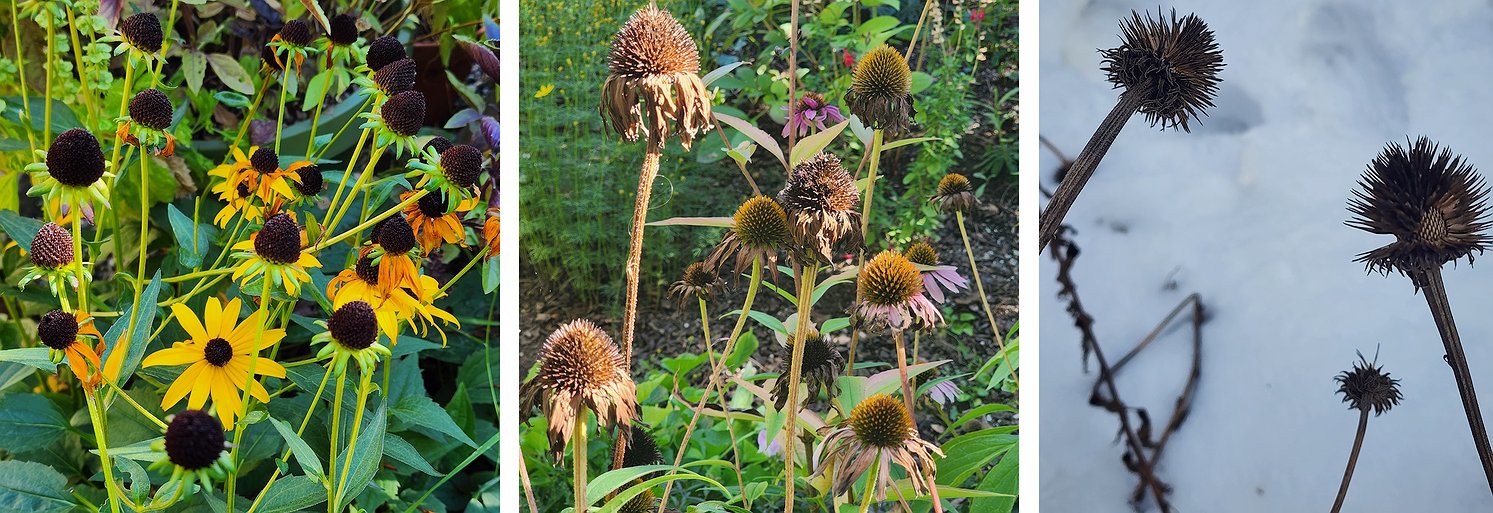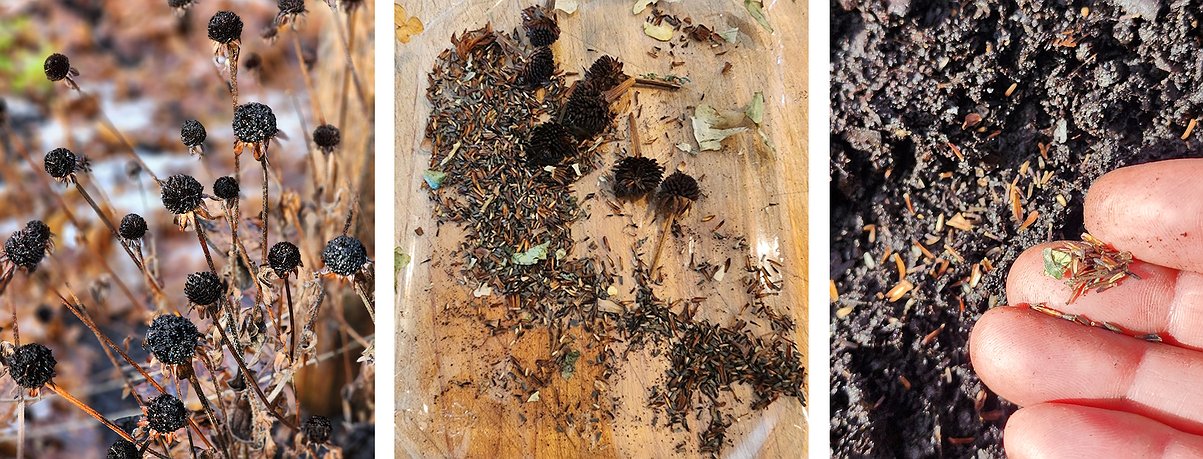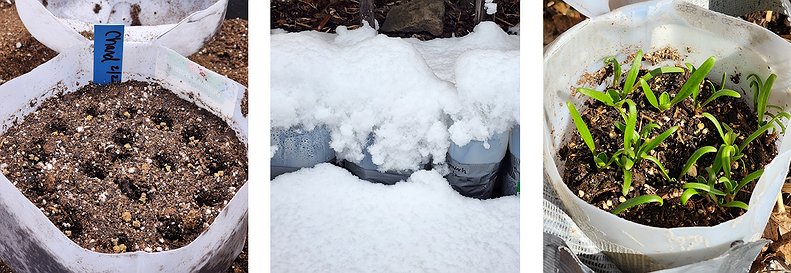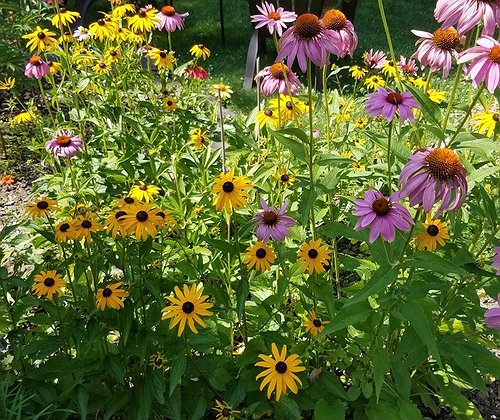The Big Chill: How cold stratification boosts seed germination
The transformation of a tiny seed into a thriving plant is nothing short of miraculous. Indeed, nature holds the secrets to perfect timing, ensuring that a seed not only germinates but does so precisely when conditions are right for its survival.
Though we often think of seed planting as a simple act — sow, water and wait — this intricate process relies on specific environmental cues. Temperature, moisture and light are pivotal in signaling the seed’s awakening from dormancy.
For many seeds, the warmth and moisture of spring soil are enough to spark life. But some seeds require a cold, dormant spell before sprouting — revealing yet another layer of nature’s magical design.
Cold stratification: ensuring the time is right
Have you ever wondered why Black-eyed Susan or Coneflower seeds fail to sprout when they hit the ground in the fall? Germination conditions are nearly perfect, yet they remain dormant.
The seed’s extended dormancy is caused by a germination-inhibiting hormone that prevents it from sprouting too soon. If they were to germinate in the fall, the seedlings would perish in the winter. It’s nature’s way of ensuring the seed’s survival.
The hormone gradually dissipates as winter's cold and damp conditions progress. Only after this cold period will the seeds break dormancy and germinate once conditions are favorable in the spring. This way of nature ensuring the seed’s survival is known as cold stratification of seeds.
Chilling out
It may surprise you to know how many perennial and native flowers, herbs and even a few vegetable seeds require cold stratification (or will have better germination rates). The list below is not all-inclusive but provides a good overview.
Common plants that require cold stratification
• Flowers: Black-eye Susan (Rudbeckia), Blanket Flower, Coneflower (echinacea), Chamomile, Goldenrod, Joe Pye Weed, Lobelia, Lupine, Milkweed, Pansies, Penstemon, Pincushion Flower (Scabiosa), Poppies, Primrose, Verbena, Yarrow
• Herbs: Bee balm, catmint, chives, garlic chives, cilantro, Anise Hyssop, lavender, lemon balm, mint, parsley, rosemary, sage
• Vegetables: Artichoke, asparagus, hops, strawberries
The recommended sowing time for many of these plants is in the fall. If you’ve tried growing these in the spring from seed or started them indoors and experienced poor germination, the reason was likely a lack of cold stratification.
Years ago, I learned this lesson the hard way with rosemary. Every attempt I made to grow the herb from seed resulted in little or no germination — a miserable failure each time. I questioned the seed’s viability. I questioned my skills as a gardener. Finally, I researched “how to grow rosemary” and discovered it required cold stratification. That was a lightbulb moment, for sure.
Unfortunately, few seed companies list cold stratification information on their seed packets, so I recommend researching “how to grow …” when starting unfamiliar seeds.
Methods of cold stratification
There are three ways to achieve cold stratification. The easiest is to let nature take her course and sow seeds in the late fall for natural winter exposure. Once spring arrives, the seeds will readily germinate.
With this method, wait until there’s been at least one hard frost before scattering the seeds over roughed-up soil and covering them with a thin layer of compost or finely chopped leaves.
Of course, sometimes nature’s timeline doesn’t jive with the gardener's. Suppose you can't wait for seeds to overwinter in the garden, or you've forgotten to plan ahead and missed the fall planting window. In that case, winter sowing and refrigeration are two more ways to achieve cold stratification.
Winter sowing method
Winter sowing also capitalizes on winter’s cold, wet conditions for stratification, but here seeds are planted in plastic milk jugs or other containers and placed outside.
In our region, this is often done in January and February, although seeds that require less time to stratify can be sown as late as March.
With winter sowing, there is no need to worry about frost dates or sowing timing; seeds germinate when the conditions are right, resulting in hardy seedlings that don’t require hardening.
In addition, this method can be used to sow many hardy annual flower and vegetable seeds that don’t require cold stratification.
Refrigeration method
The most common way gardeners stratify seeds is through refrigeration. Most refrigerators hold seeds below 40 degrees, creating the perfect environment for chilling.
Seeds are placed in a damp paper towel or a small amount of moistened vermiculite or sand inside a plastic zip bag. The bag is not sealed completely, as the seeds need air.
The time spent chilling depends on the plant variety, ranging from a day to three months or more. For example, catmint seeds need very little time in the cold — about 24 hours in the freezer will do — whereas hops need up to three months to stratify.
Most seeds need about four to six weeks, but check the seed packet or search the plant’s required stratification period online.
Monitor moisture levels weekly; the towel or growing medium should remain damp but not overly wet. Once seeds go through their faux-overwintering, they will be ready to germinate. The seeds can be planted per the packet instructions for indoor seed starting or, if the timing is right, sown outdoors.
Winter’s wonder
Cold stratification is a testament to nature’s brilliance and resilience, ensuring that seeds awaken at the right moment to thrive. By embracing this process, you unlock the potential to grow native and challenging plants successfully (I’m looking at you, rosemary).
So, this winter, take some time to experiment with cold stratification and watch as your gardening efforts bloom into something extraordinary. Whether you’re a seasoned gardener or a beginner, this simple practice will bring a touch of magic to your garden and a sense of accomplishment to your green thumb. Happy new year!
Are you itching to start seeds for spring? Join me for a winter sowing “hands-on” workshop Jan. 18 as part of the Idaho Master Gardeners' “Growing in North Idaho” class series. More details and registration here: uidahoimgkootenai.simpletix.com
• • •
Candace Godwin is a certified Idaho Master Gardener, Garden Consultant, and owner of The Coeur d’Alene Coop (thecoeurdalenecoop.com) that offers seasonal plant sales and articles on gardening and raising backyard chickens.











